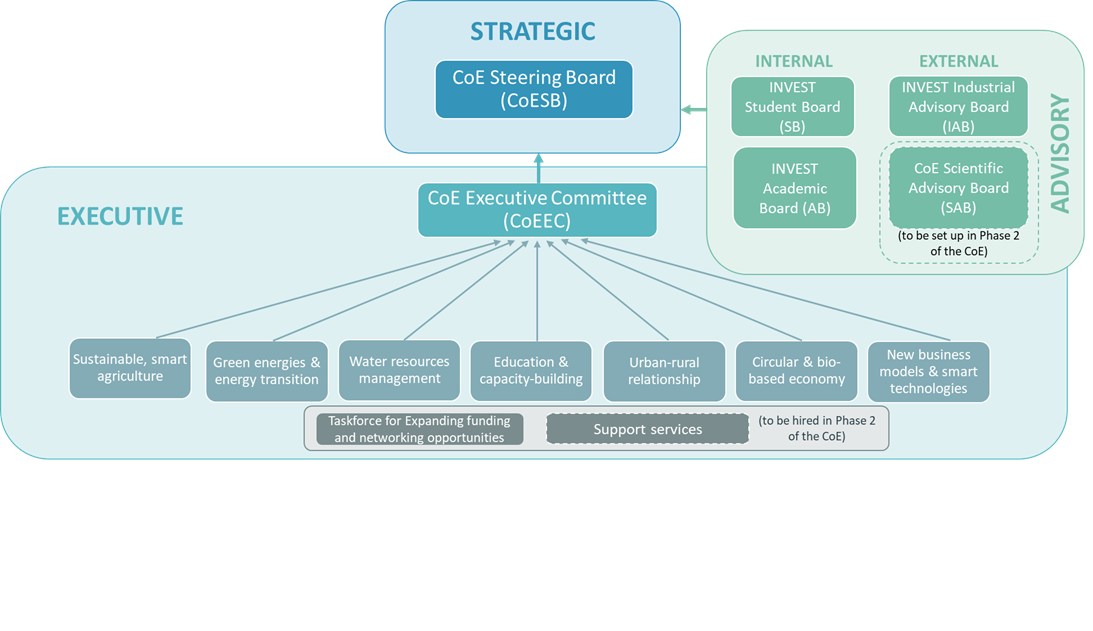Welcome to Invest-Alliance Center Of Excellence Platform.

The initial CoE governance structure foresees flexible structure, independently owned facilities, and human resources contributed in-kind. This structure was approved in October by the Rector’s Assembly, and is based on three levels of governance:
On the strategic level, the Centre of Excellence Steering Board (CoESB) is the decision-making body. It defines the strategic orientations of the CoE, ensures their coherence with European policies for research and innovation, and supervises and evaluates the programme, activities, and performances of the Centre. It is also responsible for overseeing that the allocation of resources is well aligned with overall strategic objectives of the Centre, and for monitoring and evaluating the fulfilment of such objectives. The board consists of 19 permanent members, among them also the 7 vice-rectors for research and innovation (R&I), one from each partner university,
On the executive level, the Centre of Excellence Executive Committee (CoEEC) is responsible for implementing the CoESB’s decisions and translating its strategic orientations into concrete actions, supervising the CoE’s day-to-day activities, ensuring the coordination between the seven research clusters and the stakeholder community, and ensuring the dissemination of research projects’ outcomes and the promotion of innovations within relevant networks. It consists of 17 permanent members, including the 14 principal investigators from the research clusters.
On the advisory level, the Internal and External Advisory boards provide external insights, industry perspectives, and rigorous outside reviews of the CoE’s work. The internal boards include the INVEST Student Board (SB) and the INVEST Academic Board. The external boards include the INVEST Industrial Advisory Board (IAB) and the CoE Scientific Advisory Board (SAB). The latter is foreseen to be established in Phase 2 of the CoE, and will be composed of distinguished researchers and representatives from other European University Alliances.